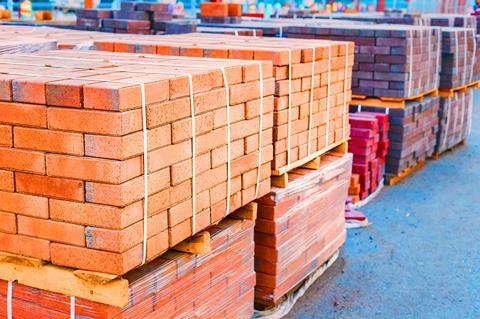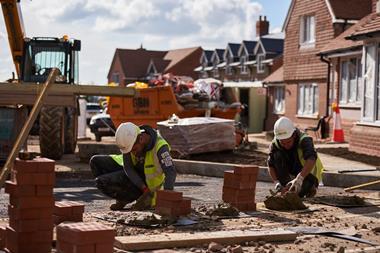Two great dramas have been capturing the attention of the British people this summer: ITV’s Love Island, and the internal debates of the Bank of England’s Monetary Policy Committee.

Granted, the latter may appeal to a more niche audience, but its outcomes will have a far wider effect than the relationship status of a few people in Mallorca.
All along Threadneedle Street, disagreements are brewing over whether to raise interest rates and rein in quantitative easing, stemming from whether rising inflation is a “transitory” phenomenon or something more permanent.
The jury is also still out on whether increased costs will continue in the housebuilding sector, where price rises have been acute.
Any barriers to meeting the government’s ambitious 300,000-new-homes-a-year target will only prolong a situation whereby many would-be home owners cannot afford to step on to the housing ladder.
Property is feeling the pinch. The latest IHS Markit/Chartered Institute of Procurement and Supply Purchasing Managers’ Index for the construction industry, which details the sector’s overall economic health as well as subindices such as inflation, showed that more than four fifths of construction firms had reported price increases.
While total activity registered 58.7 on the index, indicating that the sector is growing, the figure was down sharply from a 24-year high of 66.3, showing that price rises are causing deceleration at a time when new homes are most needed.
The rising cost of building homes has several interrelated causes. First, stocks of materials such as timber, steel, cement and roof tiles are dwindling, resulting in higher prices.
The pandemic has had a negative impact on the international production and transportation of materials, just as Brexit has put further strain on imports and reduced the pool of labour available to logistics companies inside the UK.
Meanwhile, there has been a massive spike in demand. The furlough scheme and lockdown have resulted in many amassing savings to put towards home refurbishments or the deposit on a house, with others rushing through property purchases ahead of the end of the stamp duty holiday in July.
Public construction schemes such as schools, transport infrastructure and green energy projects have also increased, according to Bank of England data, putting further strain on access to materials and adding fuel to the fire for housebuilders.
A building trend
The twin forces of supply and demand mean the trend has been building for a while. Data from the Department for Business, Energy & Industrial Strategy shows construction material prices have risen 14.7% overall over the past year.
Some materials have shot up far beyond this rate, with prices for crucial homebuilding components such as imported plywood surging 66.6%, fabricated structural steel rising 53.3% and concrete reinforcing bars up by 51.9% annually.
Inflation optimists point to US timber, one of the few materials to have fallen in price. In August, lumber futures fell to $502.30 (£336.27) per thousand board feet, 70% below their record high of $1,711 three months prior, according to data from the Nasdaq index.
Yet many investment advisers believe the commodity has reached a state of equilibrium still above pre-coronavirus levels – and any effects are unlikely to dent the UK market for some time.
Instead, many in Britain are seeking structural changes to the housebuilding industry to better weather the present inflation spike and future shocks to the sector.
One method is to increase efficiency to cut material costs. Modular construction offers a clear way forward, as factory-built homes are proven to be far less wasteful of resources.
Patrick Bergin, who became CFO of modular housebuilder ilke Homes after working in the traditional housebuilding industry, says: “When we were building homes entirely on site, about a quarter of the materials delivered to site came back out in a skip. Off-site construction reduces waste by up to 90%.”
Other companies are also looking to technology to drive down housebuilding costs. Several software products have emerged that allow construction firms to streamline their workflow and save on spiralling labour costs.
For instance, Vizcab’s products weigh the carbon impact of every building component and can save 75% of the cost of getting a product verified by a third-party contractor – not only keeping overheads low, but providing significant eco-benefits.
The company has shown that housebuilders can cut costs and carbon at the same time. And as governments ramp up regulations to reduce carbon emissions and introduce carbon budgets, its reporting tools are more important than ever.
These twin aims of lower costs and lower emissions are exemplified by another modular construction firm, 011h, which is combining highly efficient factory construction techniques with a readily available, if overlooked, material that has avoided the worst of the price rises: timber. Wooden factory-built homes aim to assuage the housing and environmental crises at the same time.
ESG concerns
As ESG concerns rise in importance, others are combining cost-cutting technology with social value – the oft-forgotten cousin to environmental benchmarks.
For homebuilders that also operate their developments, Plentific’s software, which streamlines maintenance procedures, claims to be able to cut costs by a fifth – a huge saving for institutional players. This is a win-win situation – happier tenants mean lower vacancy rates.
More innovation may well be needed if the industry is to weather the rough seas ahead. The government’s Transforming Construction Challenge, delivered through UK Research and Innovation, has invested £170m, matched by £250m from industry, into improving the efficiency of the construction sector by encouraging novel manufacturing methods and digital technologies.
Its £72m Construction Innovation Hub has been pioneering research and development in this area, although the approach may not pay dividends for some years.
Meanwhile, A/O PropTech, Europe’s largest proptech VC fund, is seeking to accelerate technological development in real estate with a €250m (£213.97m) pool of capital.
Its chief data officer, Othmane Zrikem, argues that greater access to data will be crucial.
“Cities face significant and complex challenges: cutting carbon dioxide emissions, traffic congestion and noise pollution to keep the city attractive, liveable and healthy,” he says.
“Innovative proptech companies can help all real estate stakeholders be more forward-looking in their approach, by adopting data-driven decision-making to simulate alternative strategies before rolling them out.”
The current season of Love Island, unlike the UK’s inflation woes, had a set end date. Whatever the future holds for price rises – and it seems that inflation will continue to squeeze the housebuilding sector – it is reassuring that both the government and industry are aligned in looking toward technology to guard the sector against the storms on the horizon.
![]()
If you hail from the residential sector or have an interest in construction, you can’t afford to miss the RESI Convention.
Join the debate as we look ahead to what the future holds in ‘The Age of Responsibility’.
































No comments yet